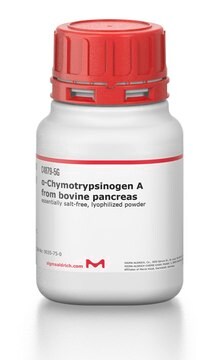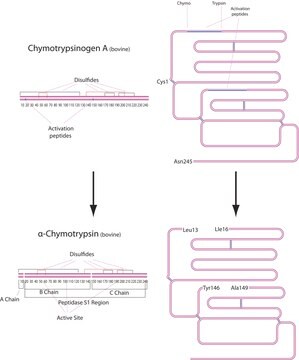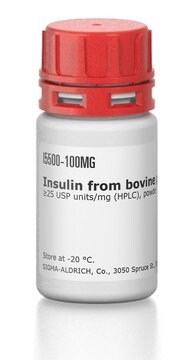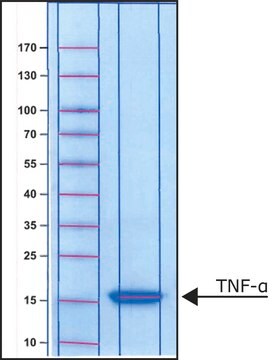MABF3164
Anti-H2-Kb Antibody, clone 25D1.16
Synonim(y):
Antygen zgodności tkankowej H-2 klasy I, łańcuch alfa K-B
About This Item
Polecane produkty
pochodzenie biologiczne
mouse
Poziom jakości
forma przeciwciała
purified antibody
rodzaj przeciwciała
primary antibodies
klon
25D1.16, monoclonal
masa cząsteczkowa
calculated mol wt 41.3 kDa
oczyszczone przez
using protein G
reaktywność gatunkowa
mouse
opakowanie
antibody small pack of 100
metody
electron microscopy: suitable
flow cytometry: suitable
immunocytochemistry: suitable
western blot: suitable
izotyp
IgG1κ
sekwencja epitopowa
Unknown
numer dostępu Protein ID
numer dostępu UniProt
temp. przechowywania
2-8°C
informacje o genach
mouse ... H2-K1(14972)
Specyficzność
Immunogen
Zastosowanie
Oceniane za pomocą cytometrii przepływowej w mysich splenocytach pulsowanych peptydem SIINFEKL.
Analiza cytometrii przepływowej: 1,0 µg tego przeciwciała wykryło H2-kb w milionie mysich splenocytów pulsowanych peptydem SIINFEKL (50 M, przez 2 h).
Testowane zastosowania
Analiza immunocytochemiczna: Reprezentatywna partia wykryła H2-Kb w zastosowaniach immunocytochemicznych (Porgador, A., et al. (1997). Immunity. 6(6)715-26; Ferez, M., et al. (2014). J Immunol. 192(1):52-8).
Mikroskopia elektronowa: Reprezentatywna partia wykryła H2-Kb w zastosowaniach mikroskopii elektronowej (Ferez, M., et al. (2014). J Immunol. 192(1):52-8).
Analiza Western Blotting: Reprezentatywna partia wykryła H2-Kb w zastosowaniach Western Blotting (Hu, C.F., et al. (2021). Vaccines (Basel). 9(3):278).
Analiza cytometrii przepływowej: Reprezentatywna partia wykryła H2-Kb w zastosowaniach cytometrii przepływowej (Porgador, A., et al. (1997). Immunity. 6(6)715-26; Ferez, M., et al. (2014). J Immunol. 192(1):52-8).
Uwaga: Rzeczywiste optymalne rozcieńczenia robocze muszą być określone przez użytkownika końcowego jako próbki, a warunki eksperymentalne mogą się różnić w zależności od użytkownika końcowego.
Opis wartości docelowych
Postać fizyczna
Rekonstytucja
Przechowywanie i stabilność
Inne uwagi
Oświadczenie o zrzeczeniu się odpowiedzialności
Nie możesz znaleźć właściwego produktu?
Wypróbuj nasz Narzędzie selektora produktów.
Kod klasy składowania
12 - Non Combustible Liquids
Klasa zagrożenia wodnego (WGK)
WGK 1
Temperatura zapłonu (°F)
Not applicable
Temperatura zapłonu (°C)
Not applicable
Certyfikaty analizy (CoA)
Poszukaj Certyfikaty analizy (CoA), wpisując numer partii/serii produktów. Numery serii i partii można znaleźć na etykiecie produktu po słowach „seria” lub „partia”.
Masz już ten produkt?
Dokumenty związane z niedawno zakupionymi produktami zostały zamieszczone w Bibliotece dokumentów.
Nasz zespół naukowców ma doświadczenie we wszystkich obszarach badań, w tym w naukach przyrodniczych, materiałoznawstwie, syntezie chemicznej, chromatografii, analityce i wielu innych dziedzinach.
Skontaktuj się z zespołem ds. pomocy technicznej








